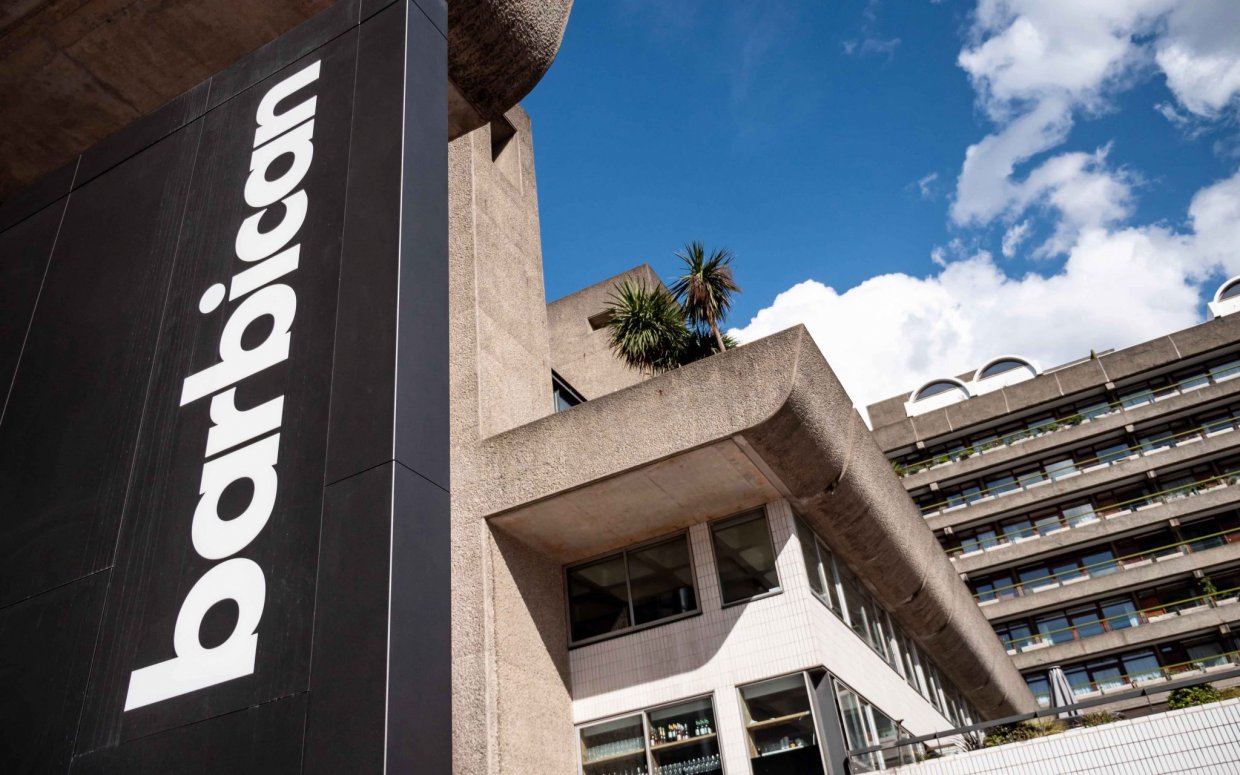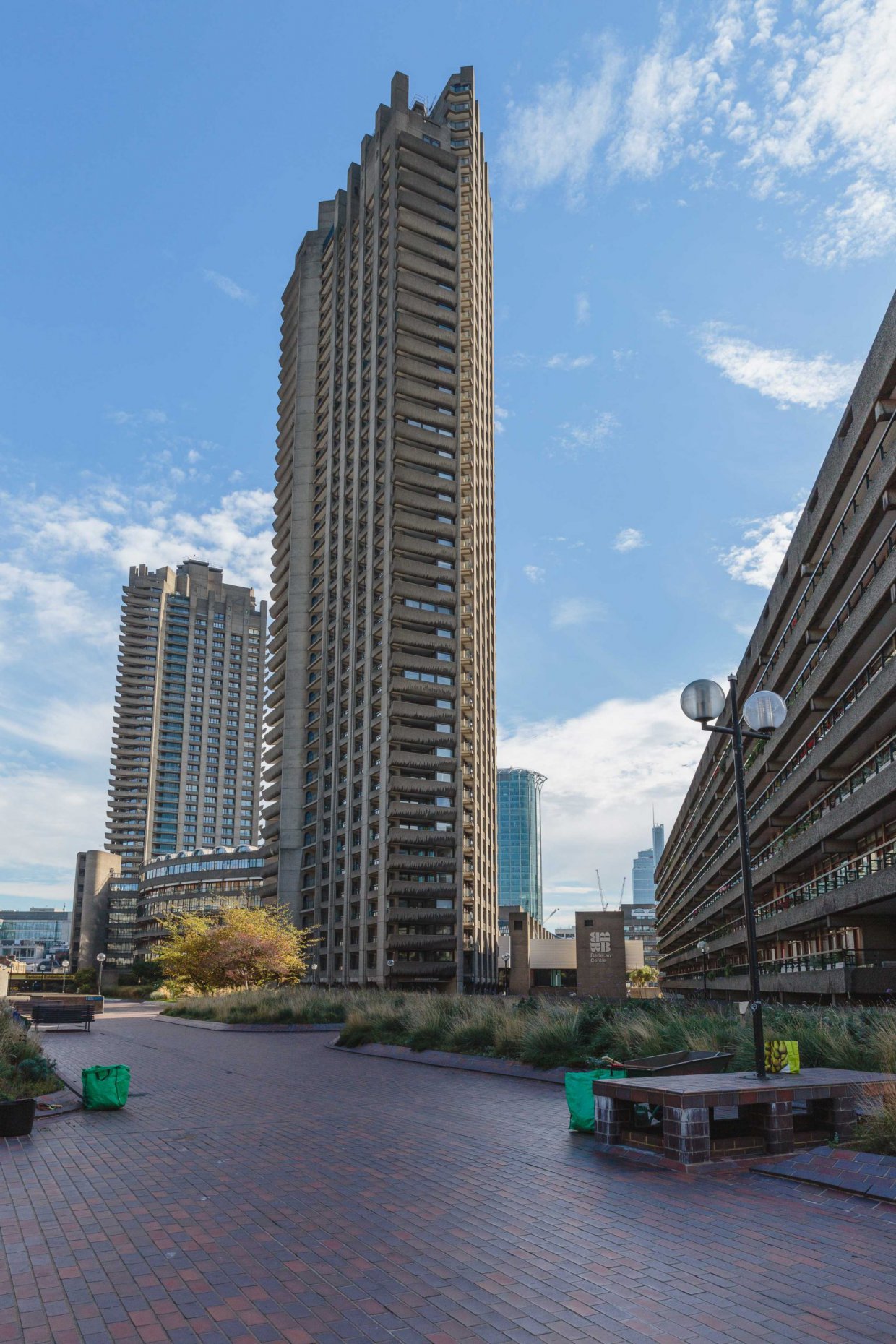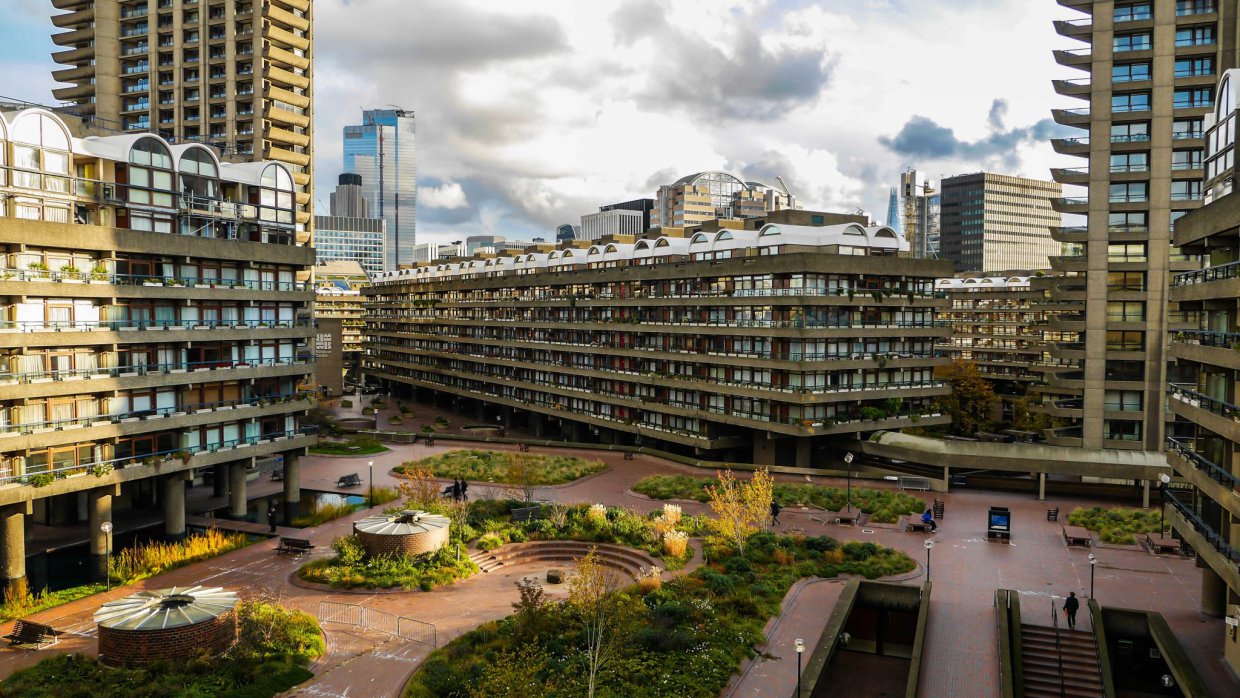
21 May 2022
A Celebration of 40 years of The Barbican
In this article we are celebrating 40 years of the City of London’s grade two listed Barbican, a brutalist behemoth and arguably the greatest piece of post-war architecture Britain has ever seen. Fiercely opposed by many at the time of its conception, it continues to divide opinion today.
The definition of a barbican is ‘the outer defence of a castle or walled city’, a nod to the section of old Londinium wall that still stands within the complex, its turret emblem is homage to this, and is peppered across signage throughout the development.
The Barbican is monumental in scale and comprises of over 2000 flats which house over 4000 residents in a multi-level labyrinthine complex. A fully pedestrianised maze of elevated walkways with a plethora of entrances and exits. There is a lake with lakeside terrace, private green spaces, shops and the jewel in the crown, – The Barbican Centre, a world renowned, multi-disciplinary, cultural hub with London’s second biggest conservatory sat on top of its roof. The Barbican Centre is home to the London Symphony Orchestra, the Guildhall School of Music and Drama and is the former home of the Royal Shakespeare Company.
The development took 25 years from conception to completion and at its inauguration on the 3rd March 1982 was hailed by Queen Elizabeth as ‘one of the modern wonders of the world’.
To gain more of an understanding as to why this was such a remarkable architectural vision, we must first look at the history of the site and how the Barbican as we know it came to be. The Barbican occupies around 60 Hectares of land, at the centre of which stands the beautiful church of St Giles Cripplegate.
Cripplegate ward, once home to a cacophonous gaggle of rag traders, dressmakers and fabric merchants was subject to relentless bombing during the blitz, which obliterated the surrounding area and left only the church standing despite it taking a direct hit. This and a section of Roman wall (plus a section of Roman turret that was discovered later) were all that remained.

The City of London Corporation obtained the bomb ravaged Cripplegate site in 1951 when just 48 residents called it home. The Corporation initially had ambitious commercial plans for the site, as there were those of the staunch belief that the sole purpose of the City was to make money and for post-war economic growth it was more offices that were needed. After much toing and froing, the corporation fraught with internal tension and arguing, a vision of a residential utopia was born.
In the mid 1950’s three young architects who had firmly cemented their reputation with the design of the nearby Golden Lane estate; Chamberlain, Powell & Bon were brought on board as architectural consultants. It was in May 1960 that CPB were declared the Barbican’s official architects with Ove Arup and Partners as structural engineers. Laing and Mcalpine were placed in charge of construction and work began in 1963.
The Barbican was an audacious conceptualisation for the future, at a time where post-war Britain craved a potent sense of optimism. The development was aimed at affluent young professionals in search of aspirational living. In the architects’ own words, the ideal tenants were ‘..young professionals, likely to have a taste for Mediterranean holidays, French food and Scandinavian design’. It was very much constructed and marketed as a luxury development.

The residential buildings within the Barbican comprise of 13 seven-storey high terrace blocks each with semi-circular barrel-vaulted roofs. There are two blocks of townhouses and two mews. Finally, three triangular 43 & 44 storey towers with boated balconies designed to shield from the inevitable wind that comes with living at such dizzying heights. The three towers soar from London’s skyline, proud, brazen and raw. Completely unabashed next to the lustrous and streamlined versions of today.
There are over one hundred different types of flats of varying sizes and configurations. The prodigious use of concrete coupled with the fact that CPB took inspiration from famed Swiss-French architect Le Corbusier scream textbook brutalism, but the architecture of the Barbican does not come without it’s contradictions.
When examined, Brutalism and its use of raw concrete are underpinned by the ideology that there is beauty in honesty and that we must celebrate the raw and naked materials used to construct the design. CPB did not necessarily adhere to this principle by choice. Previous plans for the terrace blocks to be faced with white marble, the towers to be finished with a polished concrete and the addition of colourful mosaic tiles to be added to the balconies were all rejected by the Corporation due to budget issues. Reinforced concrete was also particularly cheap and abundant in the 60’s and 70’s.
The concrete columns in the Barbican were poured in sections, leaving visible joins from different stages of pouring. The surface of every column was pick-hammered by hand, an extremely labour-intensive process, this disguised the joints and left a rough, uniform finish. It could, therefore, be argued that this is not an example of celebrating a material in its rawest form.
Softening of the utilitarian aesthetic continues in the landscaping, which was crucial to the designs, even down to choosing plant varietals that perform differently depending on the season. Water features and gardens were included to combat the severity of the concrete, and gentler earth-coloured bricks were used as paving to create a softer outdoor floorscape. Perhaps CPB were not such ardent disciples of brutalism after all?
In a not-so-subtle nod to their desired clientele, CPB included underfloor heating in every flat, floor to ceiling windows, streamlined modern kitchens with built-in Creda appliances, sleek, modern bathrooms and separate, spacious toilets with 4 sq. ft of space.
There are many poetic references to London’s old Roman city hidden in the architecture too. Crumbling turrets echoed in the semi-circular forms of the barrelled roofs that sit uniformly on top of the terrace blocks. This visual motif reoccurs throughout the site bringing cohesion to the architectural scheme. Narrow gaps in some of the outer walls reminiscent of arrow slits used by Medieval archers to ward off enemies. The jagged toothed profile of the towers giving the suggestion of ramparts of medieval fortification. The labyrinth of impossible to navigate walkways, even reports of the ghosts of centurions still guarding their posts. The Barbican sits, a fortressed city within the city. These days only under attack from neighbouring skyscrapers that grow ever taller, sprouting from the ground, violating its space, invading its privacy and threatening to disclose its secrets.

Today the Barbican centre is a culturally rich hub of activity. It houses a 1200 seat theatre, a 2000 seat concert hall and hosts around 2000 live music, cinema, theatre and visual arts events each year.
In March this year, in commemoration of its 40th anniversary, the Barbican Renewal Project was launched.
Tom Sleigh, chair of the Barbican Centre Board, said of the project;
‘The Barbican project has been an enormous success, but there is still much to do, and many significant challenges lie ahead. The building has begun to show its age and its outstanding spaces need reimagining for a new generation and a new society. There have been radical changes in arts practice across our forty years, and many changes too in the way civic buildings need to make themselves sustainable for the future. The ambitions of the Barbican to create a fully inclusive, welcoming environment are also developing, as it aims to become a sector-leading, 21st century arts centre that places our community at its heart’.
The project will focus on:
- Openness, connectivity and accessibility
- Flexibility and future proofing
- Sustainability (an ambitious target of net zero carbon emissions by 2027)
Around £100m has been allocated for construction and last month the winning design team was announced. The project will be led by architects Allies and Morrison and Asif Khan Studio, working alongside engineering and sustainability consultancy Buro Happold; heritage experts Alan Baxter Ltd; theatre, acoustic, and digital cons.
It’s fair to say, all eyes will be on this one.
Love it or hate it, the Barbican is an unparalleled masterpiece of architectural storytelling, this alone making it worthy of celebration, and it is without doubt that there are many more chapters in its story yet to come.
